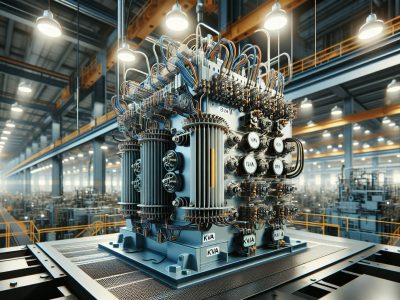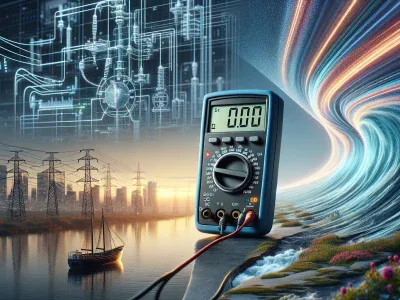Understanding the Key Differences Between Energy and Power: A Comprehensive Guide
Imagine you’re standing at the edge of a bustling city, where the hum of life never fades. Every flickering light and whirring machine around you is a testament to two invisible forces: energy and power. Though often used interchangeably, these terms hold distinct meanings that shape our world in remarkable ways.
Energy, the silent reservoir of potential, fuels everything from your morning coffee to the stars above. It’s the capacity to do work, a stored force waiting to be unleashed. Power, on the other hand, is the pace at which this energy is harnessed and spent. It’s the speed of your car engine revving, the intensity of a lightning bolt slicing through the sky.
Understanding the difference between energy and power not only deepens your appreciation for the world around you but also empowers you to make informed decisions in an increasingly energy-conscious era. Dive deeper into this fascinating distinction and uncover its impact on your everyday life.
Understanding Energy
Energy represents the capability of a system to perform work. It is fundamental in physics and underpins many aspects of science and engineering.
Definition of Energy
Energy signifies the ability to do work. It’s a conserved quantity, meaning it can’t be created or destroyed, only transformed from one form to another. Whether you’re lifting weights, lighting a room, or driving a car, you’re witnessing energy in action. According to the law of conservation of energy, the total energy of an isolated system remains constant.
Forms of Energy
Energy manifests in various forms. Kinetic energy arises from motion, like a rolling ball. Potential energy is stored energy, such as a compressed spring. Thermal energy relates to the temperature of an object and arises from the motion of its particles. Chemical energy, stored in bonds of atoms and molecules, powers activities like metabolism or combustion. Electromagnetic energy travels in waves, visible in light and radio waves. Nuclear energy is the energy stored within the nucleus of an atom, released in nuclear reactions.
Measurement Units for Energy
Energy is quantitatively measured in joules (J) in the International System of Units (SI). One joule equals the energy used when applying a force of one newton over one meter. Other units include calories (commonly used in nutrition) and kilowatt-hours (kWh) for electricity. Understanding these units helps in accurately conveying and comparing energy values in practical scenarios. In physics, efficiency and energy transfer calculations often rely on precise energy measurements, underscoring the unit’s importance.
Exploring Power
Power signifies the rate energy’s transformed or consumed. It’s akin to the speed at which work’s done. Understanding power requires delving into its various aspects and applications.
Definition of Power
Power represents how quickly energy’s transfered. It measures the work done over time. Typically, power emphasize efficiency in processes, helping you compare machinery, assess performance, and optimize energy use. Consider a lightbulb: it uses electrical energy quickly to produce light instantly, illustrating power’s immediacy.
How Power is Calculated
Power’s calculated using the formula: Power (P) = Work (W) / Time (T). Here, work connotes energy expended. In practical terms, if you lift a weight faster, your power output’s higher, though the energy remains constant. Systems using less time to perform work exhibit greater power.
Measurement Units for Power
Power’s commonly measured in watts (W). Named after James Watt, a watt equals one joule per second. Larger scales use kilowatts (kW) and horsepowers (HP) for significant systems. For example, a car engine’s power might be described in horsepowers, denoting the engine’s capability to perform work rapidly.
Key Differences Between Energy and Power
Understanding the difference between energy and power is essential for grasping their distinct roles in various contexts. Energy represents the capacity to perform work, while power describes the speed at which this work is carried out.
Conceptual Differences
Energy represents the potential to do work, existing in various forms such as kinetic, potential, and thermal. It’s a scalar quantity meaning it lacks direction, and it’s measured in joules (J). Conservation laws state that energy can’t be created or destroyed, only transformed from one form to another.
Power, contrastingly, is the rate at which energy is used or transformed. It measures how quickly work is done and is a vector quantity, incorporating magnitude and direction. Power is calculated using the formula P = W/T, where P is power, W is work, and T is time. Measured in watts (W), power gives insight into the efficiency of machinery and processes.
Practical Examples
Consider a light bulb: energy consumed is measured in kilowatt-hours (kWh), reflecting how much energy is used over a time period. Conversely, the bulb’s power rating in watts (W) indicates how much energy it uses per second.
For a car, energy is the fuel stored in the tank, while power is how quickly that fuel is converted into motion when you press the accelerator. A powerful engine uses energy efficiently to achieve high speeds in less time.
These distinctions affect many aspects of life, from managing household energy bills to optimizing industrial production. Recognizing how energy and power interplay enables you to make informed decisions in a world increasingly focused on sustainability and efficiency.
Importance of Distinguishing Between Energy and Power
Distinguishing between energy and power matters in understanding how we consume resources and their impact on daily activities, technology, and industry. Knowing the difference aids in optimizing resource use and enhancing efficiency.
Applications in Daily Life
In daily life, recognizing the difference between energy and power affects how you manage household expenses. While energy is the total amount consumed, power reveals how fast you’re using it. For instance, a light bulb’s energy usage over time provides its consumption in kilowatt-hours (kWh), while its power rating in watts (W) indicates how quickly it uses energy. Understanding these distinctions helps you select energy-efficient appliances, eventually reducing your electricity bill.
Impact on Technology and Industry
In technology and industry, distinguishing between energy and power is vital for productivity and sustainability. Power governs the performance of machinery, impacting speed and efficiency. High-power devices complete tasks faster, but consumption patterns affect long-term energy use. When manufacturers understand power ratings, they innovate more efficient solutions, optimizing energy transformation processes. This differentiation becomes crucial in designing electric engines where high power and low energy consumption minimize environmental footprint.
Conclusion
Grasping the difference between energy and power empowers you to make smarter decisions in both personal and professional contexts. As you navigate a world that prioritizes sustainability and efficiency, this understanding becomes increasingly valuable. Whether you’re managing household energy expenses or optimizing industrial processes, recognizing how these concepts interact can lead to more efficient resource use and cost savings. By appreciating the nuances between energy and power, you contribute to a more informed and energy-conscious society, paving the way for innovative solutions and a sustainable future.
- Oxidation Versus Reduction: A Comprehensive Overview - November 27, 2025
- Alternatives To Docker Desktop Extensions - November 26, 2025
- GPU Versus CPU: Understanding the Key Differences - November 26, 2025







